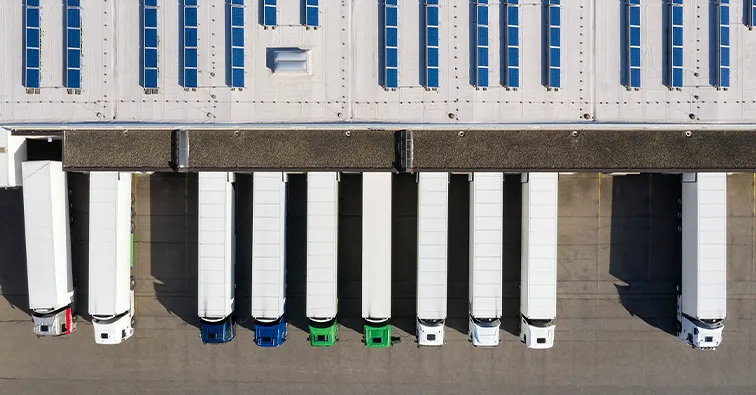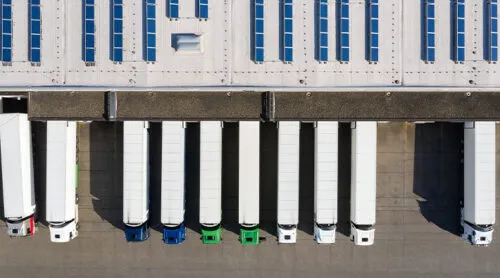
Despite reshoring trends and more insular trade policies, the world economy is still global – and as interdependent as ever. That positions distribution industry leaders to make a sizable impact on meeting climate commitments and helping manufacturers deliver on their climate pledges.
Read on to learn how investing in sustainable distribution methods today can reduce manufacturers’ exposure to supply chain disruptions and inspire other businesses to step up to the global climate challenge.
Building a Sustainable Distribution Strategy
Also known as green distribution, sustainable distribution describes a range of logistics practices designed to accomplish three primary goals:
- Reduce waste
- Lower greenhouse gas emissions
- Lower risk
There are areas to improve at every link in the supply chain and stage of production, including those most consumers don’t think of. For example, all forms of shipping account for roughly 2.5% of the global annual total greenhouse gas emissions. In the US, nearly 30% of all waste produced annually is from everyday packaging and containers – more than 82 million tons.
From source to production to store shelf, there’s lots of room for improvement. Enter green distribution.
The Principles of Green Distribution
Improving distribution sustainability requires an in-depth analysis of operations; no one-size-fits-all solutions exist. However, universal principles apply to some of the core components of global, regional and even local distribution systems. For example …
Warehousing
High-volume warehouses tend to use – and waste – substantial amounts of energy through older, inefficient lighting, heating and cooling systems. Energy consumption is expensive and volatile, especially in regions that have not adopted renewable energy sources at grid scale.
Invest in commercial energy efficiency initiatives by upgrading HVAC equipment, implementing a Building Energy Management System, and prioritizing sustainability in new warehousing construction projects. Location matters, too. Work with national and regional distribution service providers to store inventory strategically, lowering ground transportation costs and emissions.
Packaging
Opt for recycled materials whenever possible and explore new ways to reduce waste. Researchers have developed dozens of sustainable materials, including plastic-like biodegradable cornstarch packaging. Take the time to learn about how these alternative options are produced:
- Are they made with renewable energy?
- Are they made from recycled materials?
- Are they reusable?
- Can they be recycled?
- Is the packaging designed to minimize waste?
Transportation
Rail, over-the-road and last-mile delivery often rely on fossil fuels to move products from here to there. Commercial and personal transportation emissions account for 27% of total US carbon emissions annually, with 43% of segment emissions attributable to commercial trucks, aircraft, rail and shipping.
Many companies are looking to convert their transportation fleets to zero-emissions, with fleet vehicle and truck manufacturers like Ford, Nikola Motors, Stellantis, Canoo, Tesla and Volvo investing billions to make long-haul electric trucks and last-mile delivery vans a substantial portion of the world’s over-the-road transportation fleet.
There’s also an immediate alternative to gas and diesel trucks, especially for long-distance shipping: Freight rail accounts for less than 1% of US greenhouse gas emissions and just 2% of emissions within the transportation sector. Freight rail is the most efficient land solution and will need to be fully leveraged in today’s distribution network if the US plans to meet its climate commitments.
Climate Change and Supply Chain Disruptions
Investing in smarter delivery methods positions sustainable distribution companies to help customers lower costs and meet consumer demands for eco-fulfillment on staple goods and other products. It’s also a smart investment in supply chain resilience by controlling operations costs.
Long-term Disruptions from Climate Change
From sea level rise at hundreds of integral coastal ports to long-term energy blackouts, climate change is already disrupting regional and global distribution. Manufacturers that rely on international shipments may be the most at risk from rising sea levels. One study found that elevating the world’s 221 largest ocean ports infrastructure by just two meters would require 436 million cubic meters of construction materials, enough to cause global shortages of several input commodities. The cost of cement alone would cost more than $60 billion.
Answers, Options and Uncertainty
As the central link in the supply chain, distribution companies like Tilley are responsible for supporting suppliers and manufacturers as they work to mitigate their impact on the climate and the climate’s impact on their business. With global and regional distribution capabilities, an expansive product catalog and decades of experience, we’re uniquely positioned to help our customers make intelligent decisions and anticipate the unknown.
Find out how Tilley can help your business grow. Contact a Tilley representative today to learn more.
